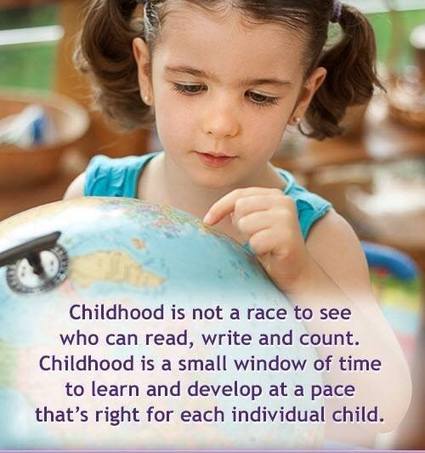 Children Learn Through Play. Play is the child¹s work, perhaps the child¹s most important way of learning. This learning process occurs even when it may not be obvious, when children actively explore their environment and act on their inborn curiosity. Adults can contribute to this natural process by encouraging children¹s interests and efforts, talking to them about what they are experiencing, and helping them elaborate and extend their play. Children Learn from Their Peers When children play with siblings and friends, they learn from each other. As questions, challenges, and conflicts arise, they learn how to solve problems. For example, a three-year-old is in the block area trying to "put a roof on her house." Her more experienced four-year-old playmate suggests, "Let's try the longer block it looks like it might fit better." This mixed-age play in particular allows children to learn in two ways, both by modeling the behavior of older children and by "teaching" younger children. Children Learn With Support It doesn't work just to tell children "You must share." At best, such orders are effective only temporarily while adults are present. However, when adults guide children through the process of taking turns or waiting for a turn, the children can internalize those strategies and use them the next time. For instance, a two-year-old wants a turn pushing a wagon, but both wagons are in use. A teacher says so that all can hear, "Jason is really waiting for a turn. He'll be ready as soon as you're done. Let's see what you can do, Jason, until they are finished. You can help put some more leaves in the wagon. Here's a rake to get another pile ready." This approach helps the child have a role and a way to enter the play. Such emotionally supportive language also helps children view adults as their advocates. It helps them solve problems rather than turning the situation into a struggle. Children Learn by Using Basic Materials Young children learn by doing. Helping with cooking, chores, and other real work is of tremendous interest and value to them. This hands-on learning is also encouraged with open-ended materials such as:
0 Comments
Your comment will be posted after it is approved.
Leave a Reply. |
Details
AuthorHi my name is Margo; I've lived in Valley Stream for over 15 years. I am the loving and very, very proud mother of one amazing 18 year old son, Isaiah. Thankfully, I am able to live my dream of caring for and nurturing young children. Archives
January 2019
|

